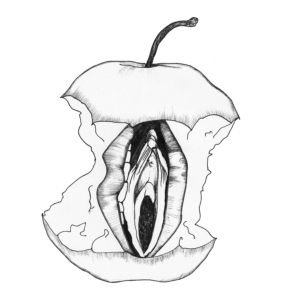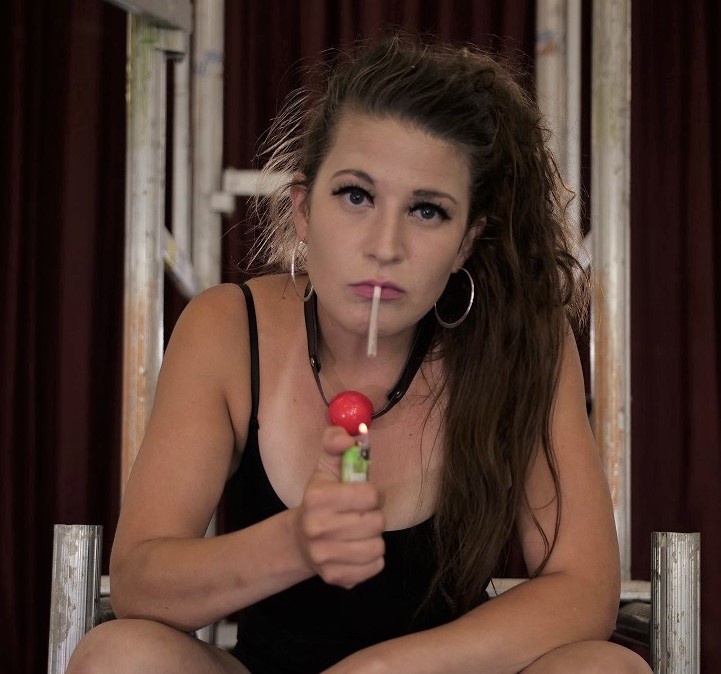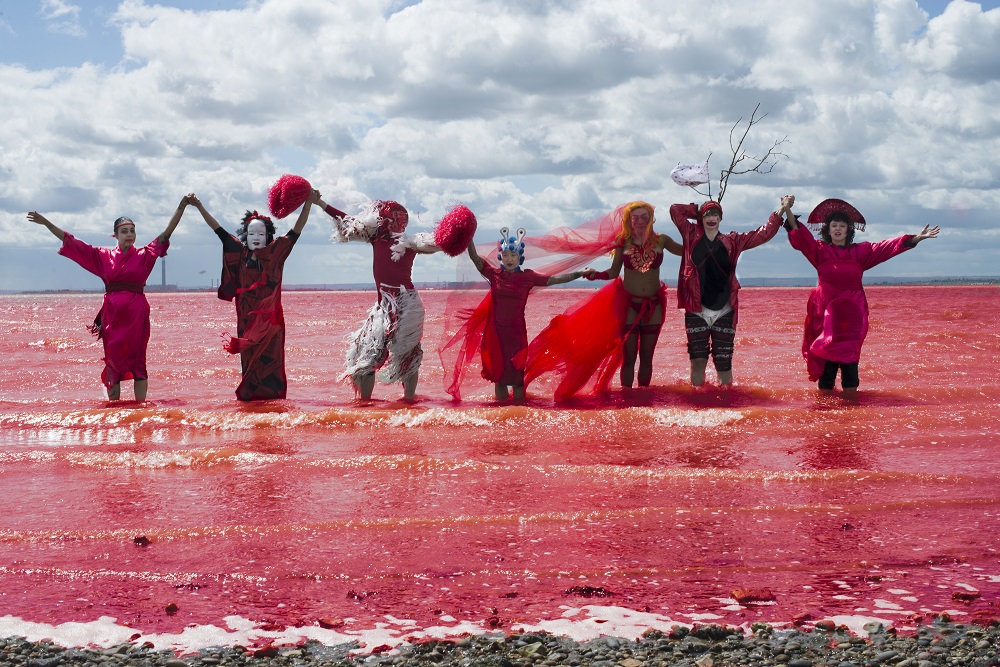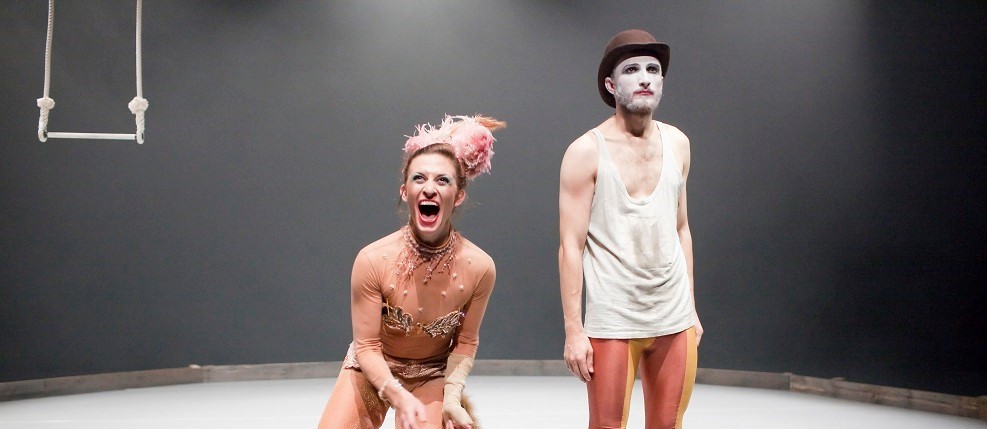Tell us a bit about your work, your practice and your process.
Quite early on I realised that my primary concern was communication and that’s been where I’ve functioned in circus for a long time. I’m really interested in how the form can communicate with people, because I’m convinced it does and it can, but it’s really really difficult, and I like difficult problems. Whilst the aesthetic shifts project to project, I think I have values that repeat in my work. My practice spans making performance and participation, and those things, for me, really overlap. I very rarely work with non professionals on stage, but I often work with non-professionals in participation processes to inform the way that I think about the questions driving the project. Often we will discover so much in the creation process that it becomes a thing in and of itself, beyond the target of a single piece of work. For example, we’re doing a lot of work with and for older people at the moment, and that started off with one piece that I wanted to make years ago which was really my midlife crisis. I was really interested in what it means to be an elder in a community like ours and how that connects with being an elder in general society, so we worked with older people, in a participation context using circus, and then we worked with older professional performers. We made that first show, and that didn’t feel like the end, and since then I think we’ve made two more pieces around ageing and I think there’s still more to be explored.
I grew up in a family of social workers, so I think I could carry a lot of guilt about just being an artist… I find it really interesting when artistic practice influences something that actually happens in the real world, which is something we are doing increasingly with Upswing. One newer aspect of the ageing project uses the practices we’ve developed, in an applied way in care homes. So it’s not about entertainment, it’s really a much more holistic thing where, for example, we look at how people lift and make contact with each other. The staff in the care home have a very medicalised way of lifting and touching people, so we’re working with them to redesign their manual handling process. Firstly by facilitating acrobatic workshops, and then taking inspiration from those to look at touch cues and building trust through touch, so that we can find safe ways of making contact and shifting weight, that don’t involve being an automaton.
What performance communities do you work with or feel part of?
It’s interesting because I think I always look for community in whatever I’m doing. Even though I started the company on my own I’ve never thought of it as just me, it’s always been a collection of people that make Upswing happen, I just happen to be the most visible person at the front. I think what I was trying to create with the Upswing was the circus community that I couldn’t find when I was working with other companies. And that’s no diss on the other companies that I worked with but going into spaces where you’re always the only black person, is exhausting. It also limits people’s conception of what it is that you can do and what you’re allowed to do in that space because you have to be representative. I’ve been questioned so many times, about things that I’ve done and the choices that I’ve made in terms of the artistic content of the work, whether it’s cultural or related to my culture, which wouldn’t happen if there were enough practising black and brown artists for that void, that lack of blackness in this space, to be filled. So one of my missions, in order to have a bit more artistic freedom, was to make sure that there were more artists in the space who could represent a more genuinely, authentically diverse picture of what the art form could or should be.
In terms of other artistic communities, I’m fascinated by theatre and dance. I think with theatre, what I love is the conversations I’m able to have with people, that feel like they’re connected with what is going on in the world. I think it’s more challenging to have those conversations in the circus community because, for some reason, we’re a very inwards looking community. There’s this sense of kind of being slightly outside of society which I find frustrating and irritating, and untrue. So, when I’m working with theatre practitioners I feel like I’m working with an art form that really recognises its place in the world. And I love that about theatre – just don’t like plays!
I feel disappointed in the way that a large section of the international circus community is not engaged in the major conversations that are happening in the world. With the conversation around Black Lives Matter for example. Not all, but many people seem to lean into the idea that circus folk are outsiders, a community already struggling to be supported and valued, so that somehow allows us not to recognise collective and personal responsibility in dealing with these issues of inequality. In the theatre community, there are still major problems around inequality relating to race, ethnicity, gender, disability, class and age but there is very visible challenge and dialouge, often led by people with lived experience of discrimination and their allies. I guess that’s playing quite heavily on my mind at the moment because it just feels like there are such big conversations that we’re not having in nuanced ways.
Can you tell us a bit about your experience of working with Circus? Your journey, learning and any sticking points…
I think I’m attracted to circus because it has that sense of slight disorder and confusion to it, that’s really useful when you’re talking about things that are real, complicated, messy, nonspecific… I think quite early when I was working with it I tried to make it too conscious, too specific, I tried to work the form in a way that didn’t allow it to be what it was and I just got frustrated with it because it wouldn’t do what I wanted it to do… And then I realised I was trying to make it be something else.
Circus really isn’t one art form, It’s a lot of different practices that sit under one umbrella and that makes it really interesting to work with because there’s always some unusual physical practice that can offer something to what I’m thinking about. It’s also so individualised, I feel like I’m still learning loads because every time I work with a new practitioner it’s like starting again with a new art form. You can’t just copy and paste. That’s why making circus feels like having a relationship with somebody and I love that. I’ve always been the kind of person that can’t do small talk. I really struggle with it. I want to get to know people really quickly and understand something about them and how they function, all that kind of stuff, and working with circus artists you actually really have to do that. Otherwise, you’re not going to get anywhere.
Outside of performance, what influences the work that you do?
It’s always people. Like everything I’m interested in, it relates to the way that we live together and how we work together as societies, communities and in relationships. People are fundamental units of life. I think I’m fairly political but I think it’s with a very small p, you know the personal political relationship and how that radiates out. So it’s not radical or really in your face politics, but I’m interested in the choices that people make, who they choose to be close to and who they choose to be distant from. I think that is a political statement. How we use our bodies in the world is always political, and that sort of fascinates me. When I was a kid, and when we came to the UK, I didn’t speak a lot of English. I spent a lot of time watching people and my mum was slightly worried about me because I was a very silent lurky child. And it was just because I was really curious because I was suddenly seeing very different people and going from one space or one community to another… And I think that’s still the way that I function. I silently look and observe.
Can you tell us about an experience of seeing a show that really stands out in your memory?
Common Dance which was a Rosemary Lee piece I saw at Greenwich’s Borough Hall where Greenwich dance used to be. It’s not a really overly decorated room, but it has this amazing parquet floor which forms these concentric circles going into the centre of the space. It was a piece that was made with non-professional performers and professional performers, of a spectrum of ages, and a choir… the acoustics of the space were incredible and I remember the sound of all of those voices was astonishing. It was really magical. I think that word is overused, but the sound was just so extraordinary and human. What I really loved about the piece was the way in which they were a community, but also there were moments where you could really look at an individual and really see them and just enjoy the joyous sensation of watching people move together with different levels of skill.
I think at that moment I was probably at a point when I was really frustrated with circus, because I felt all of the work that I was seeing was a celebration of white men and how strong and fit they were. So this show was exactly what I needed to see in that moment, to remind myself that all people are beautiful and all people deserve to be seen, and that performance and virtuosity can exist in the structure of the work as well as the skill or the scale of the performer.
Can you tell us about an exchange you have had with a member of your audience that has stayed with you?
We have this one piece of work that’s on tour at the moment, called Catch me, which is an outdoor duet between an older white woman and a young black man. I was really fascinated with the different experiences that these two groups have in public space, of being hyper-visible, or being invisible. I wanted to make a duet with two people who kind of fit those identities, but that was really about going beyond the onion skin and revealing the many different possibilities and relationships that could exist between these two bodies. I loved the work whilst we were creating it but I was really worried about putting it on the street. I was worried about how vulnerable the performers were making themselves, and also it wasn’t like outdoor work which tends to be bright, colourful and engaging, it was the opposite of that, it was a piece that was really quiet and the demand on the audience was to be voyeuristic… But we put it out, and the surprise for me was that people stayed and they watched it, and at the end, people sat and talked in detail about what they’d seen… which was exactly what I wanted to do. It needed stillness, but I just didn’t think it was going to happen. I thought the only space that you could do that kind of work was a studio theatre. It was phenomenal. I remember sitting next to a couple who were talking about it and just kind of listening to the conversation going – yes, yes.!!
Tell us a bit more about the project you are currently working on….
I’m working on a piece at the moment that has the working title Seasons. I’m really interested in the way that we live right now and how disconnected we are on a day to day basis with the natural environment. I grew up in London, and I realise that I have a little bit of a phobia of being in green spaces when I can’t see any concrete. I love the idea of walking through the woods but quite often when I’m walking there I find myself feeling anxious. So I was curious about that and I had also noticed that my niece was starting to be similar. When we went for a walk I had to force myself to touch wet soil and slugs and stuff so that she wouldn’t feel anxious about doing that and getting dirty. We started the r&d process by working with circus artists and natural materials, leaves, soil, things that had texture, and seeing what we could find in terms of how we could use them and relate to them… And it’s emerging into a piece that is really about body and object, balance and imbalance, texture and smell and touch and sensation…. And I don’t know exactly what it is yet, but I know that it connects to the way that I feel about being disconnected from nature and the way that I’m sensing that this feeling that I have as an adult starts in childhood. So I want to make a piece for children that is about immersing them in these textures, smells and sensations, and work with circus artists to bring those things alive, in a way, or engage them, and make them feel like they want to play with it as well.



